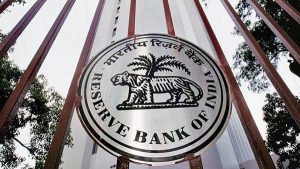Today Current Affairs: 21st July 2022 for UPSC IAS exams, State PSC exams, SSC CGL, State SSC, RRB, Railways, Banking Exam & IBPS, etc
Table of Contents
Central Bank Digital Currency (CBDC):

The Reserve Bank of India (RBI) is in the process of implementing the Central Bank Digital Currency (CBDC) in a phased manner for wholesale and retail segments, an official said.
- The introduction of CBDC was announced in the Union Budget 2022-23, by Finance Minister Nirmala Sitharaman and necessary amendments to the relevant section of the RBI Act, 1934 have been made with the passage of the Finance Bill 2022.
- The passage of the bill has enabled the RBI to conduct a pilot and subsequent issuance of CBDC.
- The RBI is also working on phased implementation of a central bank digital currency (CBDC) in both wholesale and retail segment.
- CBDC is a digital or virtual currency but it is not comparable with private virtual currencies or cryptocurrency that have mushroomed over the last decade. Private virtual currencies do not represent any person’s debt or liabilities as there is no issuer.
Swavlamban:

Swavlamban’, the maiden seminar of the Naval Innovation and Indigenisation Organisation (NIIO), was held at New Delhi
- The two day seminar saw enthusiastic participation by the academia, industry, policy makers, think tanks, students and senior government officials, in addition to the naval personnel.
- Personnel at Command Headquarters and outlying units of the Navy also assembled at designated auditoriums spread across the country to participate online.
- Hon’ble Prime Minister was shown a demo of ‘Varuna’ Personal Air vehicle – an autonomous multi-copter drone capable of carrying a passenger.
- The highlight of the seminar was the release of the iDEX DISC7 (SPRINT) challenges by the Prime Minister.
- SPRINT (Supporting Pole-vaulting in R&D through iDEX, NIIO and TDAC) is a collaborative project between the Defence Innovation Organisation (DIO) and NIIO aimed at developing atleast 75 indigenous technologies / products as a part of Azadi Ka Amrit Mahotsav.
- The maiden seminar is ‘historic’ both in scope and ambition and will foster a new chapter in the naval thrust towards self-reliance in defence and an AatmaNirbhar Bharat.
US Inflation Hit a Record High Of 9.1% In June 2022:

US Inflation hit a record high of 9.1% in June 2022, the highest in 40 years.
- US observers have argued that the US central bank will not be able to achieve a soft landing for the economy if the yield curve inverts.
- Start of reverse currency wars has also been predicted.
- Bonds are essentially an instrument through which governments (and also corporations) raise money from people.
- A bond’s yield is the return to an investor from the bond’s coupon (interest) payments.
- Typically, government bond yields are a good way to understand the risk-free interest rate in that economy.
- The yield curve is the graphical representation of yields from bonds (with an equal credit rating) over different time horizons.
- In other words, if one was to take the US government bonds of different tenures and plot them according to the yields they provide, one would get the yield curve.
Bond Yield Inversion:
Under Normal Circumstances:
- Any economy would have an upward sloping yield curve.
- As one lends for a longer duration — or as one buys bonds of longer tenure — one gets higher yields.
- If one is parting with money for a longer duration, the return should be higher.
- When investors feel confident about the economy they pull the money out from long-term bonds and put it in short-term riskier assets such as stock markets.
- In the bond market, the prices of long-term bonds fall, and their yield (effective interest rate) rises.
- This happens because bond prices and bond yields are inversely related.
Suspicious Circumstances:
- However, when investors suspect that the economy is heading for trouble, they pull out money from short-term risky assets (such as stock markets) and put them in long-term bonds.
- This causes the prices of the long-term bonds to rise and their yields to fall.
Amendment Of Environment Impact Assessment Rules:

The Ministry of Environment, Forests and Climate Change has notified amendment to the Environment Impact Assessment (EIA) Rules
Changes:
- Any project which is 100 km from the Line of Control, among other locations, will be exempted from an environmental clearance before construction.
- It will do away with the need for green clearance for the construction of the controversial Char Dham project, ( connectivity to Kedarnath, Badrinath, Yamunotri, and Gangotri shrines)
- Thermal power plants up to 15 MW based on biomass or non-hazardous municipal solid waste using auxiliary fuel such as coal, lignite or petroleum products up to 15 per cent have also been exempted.
- Ports which exclusively deal in fish handling, and cater to small fishermen, will be exempted from environmental clearance.
- Other projects exempted are Toll plazas that need more width for the installation of toll collection booths, and expansion activities in existing airports without an increase in the airport’s existing area.
NITI Aayog Releases Report On Digital Banks:

NITI Aayog’s report makes a case and offers a template and roadmap for a licensing and regulatory regime for digital banks. It focuses on avoiding any regulatory or policy arbitrage and offers a level playing field to incumbents as well as competitors.
The report recommends a carefully calibrated approach, comprising the following steps –
- Issue of a restricted digital bank licence (to a given applicant) (the license would be restricted in terms of volume/value of customers serviced and the like).
- Enlistment (of the licensee) in a regulatory sandbox framework enacted by the Reserve Bank of India.
- Issue of a ‘full-scale’ digital bank licence (contingent on satisfactory performance of the licensee in the regulatory sandbox, including salient, prudential and technological risk management).
Reintroduction Of Cheetahs:

India and Namibia signed a memorandum of understanding (MoU) for reintroduction of cheetahs into the historical range in India.
- First batch of eight cheetahs comprising four male and as many female cheetahs are expected to arrive in India before Independence Day.
- The cheetahs will be released in Kuno National Park, Madhya Pradesh.
- India plans to introduce 8-10 cheetahs every year with a total 50 from Namibia, South Africa and other African countries over the next five years.
- Under the MoU, both the countries will also collaborate in areas of climate change, environmental governance, environmental impact assessments, pollution and waste management.
SPRINT Challenges:

PM unveiled ‘SPRINT challenges’, an initiative aimed at boosting the usage of indigenous technology in the Indian Navy.
- Naval Innovation and Indigenisation Organisation (NIIO) in cooperation with the Defence Innovation Organisation (DIO), aims to induct at least 75 new indigenous technologies/products into the Indian Navy.
- The collaborative project is named SPRINT — Supporting Pole-Vaulting in R&D through iDEX (Innovations for Defence Excellence), NIIO and TDAC (Technology Development Acceleration Cell).
- The expenditure on defence procurement from foreign sources has reduced from 46% to 36%, thereby reducing the import burden, in the last 3 (three) years i.e. from 2018-19 to 2020-21.
Other initiatives for indigenization of Defence:
- Defence Acquisition Procedure 2020: Prioritized capital investment from domestic manufacturers.
- New FDI Policy: Preference to ‘Buy (Indian)’, ‘Buy & Make (Indian)’ & ‘Make’ categories of acquisition over ‘Buy (Global)’
FDI through automatic approval is increased from 49% to 74%. - E- Biz Portal: A one-stop shop for providing G2B services to investors and business communities.
- Mission Raksha Gyanshakti: with the objective of creating greater Intellectual Property in the Defence Production Ecosystem.
- Artificial Intelligence in Defence: Creation of Defence Artificial Intelligence Project Agency (DAIPA) in, 2019 for greater thrust on Artificial Intelligence (AI) in Defence.
- Strategic Partnership Policy: This is to promote Joint Ventures (JV) between global defence majors and the indigenous private sector.
INS Sindhudhvaj:

The Indian Navy decommissioned its Kilo class Submarine, INS Sindhudhvaj from its service at Vishakapatnam after 35 years of service.
- With its decommissioned Navy has left with only 15 conventional submarines in service
- It was commissioned into the Indian Navy in June 1987.
- It was one of the 10 Kilo-class submarines, India acquired from Russia between 1986 and 2000.
- It had many firsts to her credit including operationalization of the indigenized sonar USHUS, Indigenised Satellite Communication systems Rukmani and MSS, Inertial Navigation System, and Indigenised Torpedo Fire Control System.
- It also successfully undertook mating and personnel transfer with Deep Submergence Rescue Vessel.
- It was the only submarine awarded the CNS Rolling trophy for Innovation by the Prime Minister.
- With its decommissioning Navy’s sub-surface fleet now includes seven Russian Kilo-class submarines, four German HDW submarines, four French Scorpene submarines, and the indigenous nuclear ballistic missile submarine INS Arihant.
- Further, the last two of the Scorpene class submarines are in various stages of trials and outfitting.
- There are efforts being implemented like the construction of six advanced submarines under Project-75I but it has been delayed.
- Project-75I envisages the indigenous construction of submarines equipped with the state-of-the-art Air Independent Propulsion system at an estimated cost of Rs. 43,000 crores.
Green Pit Vipers:

On World Snake Day (16th July, 2022), there was consensus for developing effective antivenom against the venom of the Green Pit Viper.
- Green pit viper is not more lethal than Russell’s viper, but the hemotoxic venom it injects prevents the blood in the body from clotting resulting in internal bleeding.
- Moreover, the antivenom available in India cannot counter the venom of the green pit viper.
- There are among 15 venomous snakes like the monocled cobra, the banded krait, the lesser black krait, the great black krait, the mountain pit viper and the redneck keelback out of 64 recorded so far across Northeast India.
- Most of the snakebite cases in the region involve different species of the green pit viper, making up the other venomous snakes.
- There is lack of standardised reporting or under-reporting of snake bites.
- The current available data say there are more than 1.4 million cases resulting in 1,25,000 fatalities annually.
- Pit viper, any species of viper (subfamily Crotalinae) that has, in addition to two movable fangs, a heat-sensitive pit organ between each eye and nostril which together help it accurately aim its strike at its warm-blooded prey.
- Pit vipers are found from deserts to rainforests.
- They may be terrestrial, arboreal, or aquatic. Some species lay eggs; others produce live young.
- The venomous pit vipers species includes hump-nosed pit viper, Mangrove pit viper and Malabar Pit Viper.
- Russell’s Viper and Saw-scaled Viper are two most venomous vipers species found in India and member of big four poisonous and deadliest snakes in India.
- These snake species are responsible for the majority of snake bites in India.
Pythagoras’s Theorem As “Fake News” : NEP

A position paper by the Karnataka government on the National Education Policy (NEP) 2020 has described Pythagoras’s theorem as “fake news”.
- It has referred to a text called the Baudhayana Sulbasutra, in which a specific shloka refers to the theorem.
About Pythagoras:
- Evidence suggests that the Greek philosopher (around 570–490 BC) did exist.
- There is an element of mystery around him, largely because of the secretive nature of the school/society he founded in Italy.
- Relatively little is known about his mathematical achievements, because there is nothing today of his own writings.
About Pythagoras Theorem:
- The Pythagoras theorem describes the relationship connecting the three sides of a right triangle (one in which one of the angles is 90°).
- a2 + b2 = c2
- If any two sides of a right triangle are known, the theorem allows you to calculate the third side.




